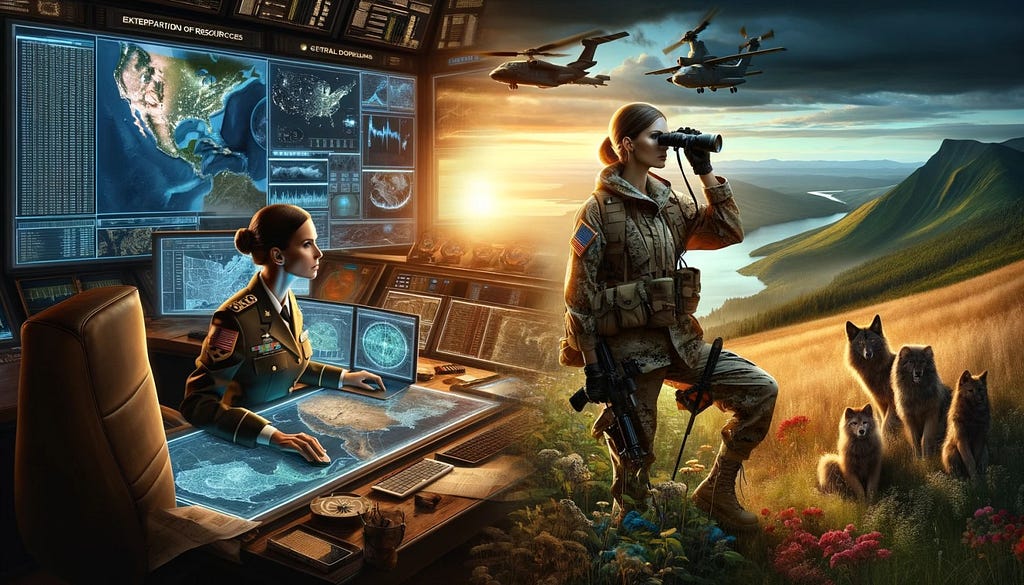“Organisations, by their very nature are designed to promote order and routine. They are inhospitable environments for innovation.” ~ Theodore Levitt
Established organisations are structured for repeatability and reliability, conditions under which sparking innovation can be especially difficult. This structure was perhaps suitable when business environments were more stable. Yet, managing a business amidst today’s high uncertainty is exceedingly challenging. As organisations grow and complexify, they tightly control their essential functions from marketing to finance to ensure consistency. A deep-seated aversion to risk, coupled with a culture where deviation from the plan is perceived as career-damaging, means management’s primary role often becomes about delivering a predictable return on investment.
In response to uncertainty, these organizations typically resort to meticulous planning. The traditional process involves four key stages: gathering third-party data, drafting a detailed business plan, making expert decisions, and focusing on execution — essentially, study, plan, decide, and build. While effective for established business models, this approach fails catastrophically under conditions of innovation and uncertainty, often leading to “analysis paralysis.” Lengthy benchmarking and extended business plan development can cause delays of months or even years, allowing more agile competitors to capture key opportunities.
Clayton Christensen highlights a critical error: “Companies whose investment processes demand quantification of market sizes and financial returns before they can enter a market get paralysed or make serious mistakes when faced with disruptive technologies. They demand market data when none exists and make judgments based on financial projections when neither revenues nor costs can be known.”
Historically, companies aimed to find a competitive advantage through a viable business model and exploit it for as long as possible. Incremental changes would occur in product features, customer segments, technology, operations, and more, but the core business model (and resulting mental model) would remain profitable for generations. According to the Boston Consulting Group (BCG) Group, the average life of a business model was once fifteen years, a figure that has now decreased to five. Further emphasising this shift, Innosight’s, Corporate Longevity Forecast, predicts that the average tenure of companies on the S&P 500 list will decrease from 33 years in 1964 to just 12 years by 2027.
“All the efficiency in the world has no value if it remains static in a volatile world”― Stan McChrystal
In this rapidly changing landscape, today’s business leaders face a dual challenge. For legacy businesses, incremental upgrades are insufficient; they require a fundamental reinvention of business models to sustain growth. Leaders must adopt the dual perspectives of a soldier and a scout, not only defending their existing market positions but also exploring new territories for growth. The balance between exploiting current advantages and exploring new opportunities is essential for sustained success.
In this week’s Thursday Thought, we (ahem) explore the soldier and scout mindsets.
The Soldier Mindset: Defending the Fortress

“The crew’s attachment to procedure instead of purpose offers a clear example of the dangers of prizing efficiency over adaptability.” — Stan McChrystal
The soldier in a leader is vigilant, disciplined, and fiercely protective of their territory. This mindset is about exploiting existing assets, technologies, and market positions to maximize value. It involves a strategic defence against competitors, guarding trade secrets, and fortifying the company’s market share. The soldier mindset equates reasoning with defensive combat, where values and achievements are at risk from opposing views and competitive threats. This perspective emphasises stability and efficiency in operations, ensuring that the organisation’s core business runs smoothly and effectively.

A soldier in the boardroom is adept at crisis management, careful decision-making, and implementing defensive strategies to counteract market volatility. They are the guardians of the company’s legacy, ensuring that external pressures do not erode the hard-won gains of the past. Risks are unwelcome, surprises scorned, and mistakes are not tolerated. Deviations make you a deviant, maybe even a threat.
The Scout Mindset: Mapping Uncharted Territories
Conversely, the scout represents the explorative aspect of leadership. This role is about having an open and inquisitive mind and seeking new opportunities, technologies, and markets. Scouts are driven by curiosity and a desire to understand what lies beyond their current knowledge and control. This mindset is essential for innovation, as it allows leaders to prepare for changes in consumer preferences, technological advancements, and shifts in the global economy.
Scouts in leadership positions prioritize learning and adaptation. They are not afraid to venture into unknown territories, armed with research, insights, and an eagerness to discover new growth avenues. Unlike soldiers, scouts are less about defending and more about understanding and integrating what is true and valuable from the external environment into their strategies.
Balancing Both Mindsets

“Exploration includes things captured by terms such as search, variation, risk-taking, experimentation, play, flexibility, discovery, and innovation. Exploitation includes such things as refinement, choice, production, efficiency, selection, implementation, and execution. Adaptive systems that engage in exploration to the exclusion of exploitation are likely to find that they suffer the costs of experimentation without gaining many of its benefits. They exhibit too many undeveloped new ideas and too little distinctive competence. Conversely, systems that engage in exploitation to the exclusion of exploration are likely to find themselves trapped in suboptimal stable equilibria. As a result, maintaining an appropriate balance between exploration and exploitation is a primary factor in system survival and prosperity.” — James G. March (https://www.jstor.org/stable/2634940)
The most successful business leaders are those who can seamlessly switch between being soldiers and scouts. They recognise that an excessive focus on defence can lead to missed opportunities, while too much exploration without consolidation can lead to overextension and vulnerability.
Balancing the soldier (exploit) and scout (explore) mindsets requires a deep understanding of one’s business environment, the ability to foresee future trends, and the wisdom to know when to defend and when to explore. It involves creating a culture that values both stability and innovation, where the discipline of the soldier and the curiosity of the scout are equally celebrated and integrated into the company’s strategic planning.
As Michael Tushman and Charles O’Reilly put it: “To flourish over the long run, most companies need to maintain a variety of innovation efforts. They must constantly pursue incremental innovations, small improvements in their existing products and operations that let them operate more efficiently and deliver ever greater value to customers. Companies also have to make architectural innovations, applying technological or process advances to fundamentally change some component or element of their business.”
The duality of being both a soldier and a scout is not just a metaphor but a strategic imperative for business leaders in the modern age. It’s about defending one’s territory while also exploring new horizons. Leaders must cultivate the ability to exploit their current assets and capabilities while simultaneously exploring new growth opportunities. By embodying both mindsets, leaders can ensure their organizations remain resilient in the face of adversity and agile enough to capitalize on new possibilities. The art of leadership, then, lies in mastering the balance between these two roles, guiding their companies through the ever-changing landscape of business with vision, courage, and adaptability.
Thanks For Reading
Many sources inspired this article, interviews with Michael Tushman and Charles O’Reilly and Andrew Binns led me to James G. March. Next, Wendy K. Smith and Marianne Lewis released “Both/And Thinking”. The final part in our 3-part series with Wendy is in the cooker. In the meantime, don’t miss the latest in our corporate explorer series with thanks to Wazoku featuring Christine Griffin on the subject of “Building an Ecosystem Playbook for Scaling a New Venture”
Tushman and O’Reilly with a cameo by Steve Blank
https://medium.com/media/4eb21d3293a4b4908bfb67ddf7b72e4f/hrefhttps://medium.com/media/2d305c1769801c5793cdcffa3d6bec2e/hrefhttps://medium.com/media/553b101842be1599232ab81c4b3a6d7f/href
Conquest and Curiosity: Soldier vs Scout, Exploit vs Explore was originally published in The Thursday Thought on Medium, where people are continuing the conversation by highlighting and responding to this story.